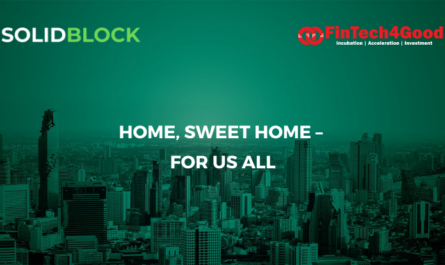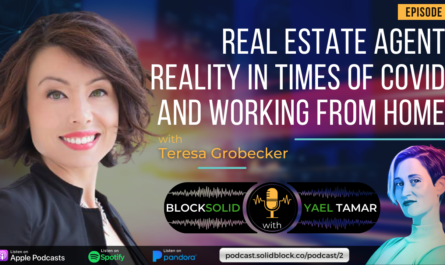
In an interview recently with Cointelligence’s Lora Salomidou, host of the Women of Blockchain podcast, Lora asked SolidBlock’s CMO Yael Tamar about how the process of tokenization actually works. Yael gave a lot of great detail, describing how entire process works from end to end.
To hear it directly from Yael, along with a broader exploration of regulation, COVID-19, and the investment economy, check it out on iTunes here, on Spotify here, or wherever you download podcasts.
But since this is a question we get from so many people, we thought we’d share some of the nuts and bolts of how this actually takes place right here. This is the tokenization process, broken down into 4 basic steps:
- Determining whether tokenization is best for this asset
Tokenization is a combination of digitization and securitization. Placing assets on a blockchain is basically making them digital. We’re taking a physical asset and creating a digital representation of that asset so that it can be transferred in a much more streamlined manner.
So first of all, I’d ask them why they’re doing tokenization. In the next five to 10 years, almost every asset will be liquid in one way or another.
There are several use cases where tokenization really fits right now. It should be an asset that would really benefit from global demand. So, for example, a lot of investors in Asia love holding U.S. or European real estate. If you anticipate global demand, then tokenization is one of the very few ways you can go, because global investment is super difficult.
- Identifying applicable regulation
First and foremost, we have to take care of the applicable regulation, based on where the asset is and where the investors are. If the asset is in London, and the investor is in Hong Kong, then we have to apply for compliance in Hong Kong.
And because we have to comply with local regulations, we’re not going to do this for a single investor. But if we’re planning on marketing in Hong Kong, then we’ll go and do a private placement memorandum or an offering memorandum in Hong Kong and see what we need to do to structure the offering there.
We can do offerings in many locations at the same time. For example, we can do an offering in the United States, we can do an offering In Europe, we can do it in the UK. The only catch is that, basically, we may have to establish several, special purpose vehicles (SPVs), which involves setting up a company that holds the asset, which can then be broken down into parts. Because of this need for several SPVs, legal and regulatory step is one of the most involved parts of the STO.
So this is what we do during the planning stage, planning out the legal structure, applicable regulatory processes.
Then we plan out the business model for the assets. We need to make sure that it’s super attractive to people because in a global market, people will now have global opportunities. So they’ll be comparing assets from all over the world. If they can get maybe 10% annually in Asia, but they can get the same in the U.S., they’ll go for the U.S., where it’s possibly less risky.
- Putting the investment on the blockchain
At this point, we take the offering memorandum and turn it into a smart contract. Essentially, we’re taking the conditions from the offering memorandum and writing a blockchain program that clearly delineates what investors are getting.
It outlines that they’re getting a part of the asset, which part of the asset they’re getting, how much and exactly what they’re entitled to, for example, dividends, interest, an upside when the project is sold? So all of that is encoded in the smart contract.
- Distributing the security to investors
When we distribute to investors, because it’s a highly regulated product, throughout the onboarding process they have to undergo what’s known as know your customer (KYC) and anti-money laundering (AML) checks. In some countries, there’s also an accreditation check, so that we know that they are eligible to invest, for example, in the U.S., they must be accredited investors.
They only have to undergo this process once right when they get on board on the platform. And then that’s it, they can now invest through the platform, investing money in projects that appeal to them and that match their investment needs.
How long does the entire process take?
The time to complete this process depends on the company – for instance, how prepared they are to issue their offering, and how familiar they are with the relevant technology. But generally, this process takes from 2 to 4 months to complete. Making it significantly faster than traditional methods of raising funds, while offering many unique advantages, such as lower cost, lack of intermediary, and the ability to retain total control over their projects.
To find out more about how tokenization can help you raise funds faster and more easily for your next real estate project, click here to choose your best time for a call.
And be sure to follow SolidBlock on social media so you don’t miss any of our exciting token release announcements!

 by
by 

